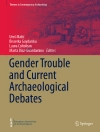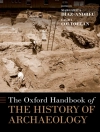Uroš Matić is an archaeologist and Egyptologist based at the Institute for Ancient History and the Ancient Near Eastern Studies, University of Innsbruck. His main expertise is in war and violence in ancient Egypt, ancient Egyptian interrelations, settlement archaeology and gender studies in archaeology. He obtained his Ph.D. from the University of Münster in 2017 and received two prizes for this work (Philippika prize of Harrassowitz in 2018 and Best Publication Award of the Austrian Academy of Sciences in 2020). He held a DAAD P.R.I.M.E fellowship from 2018 to 2019 and received the grants of the Foundation for Postgraduates of Egyptology in Vienna in 2016 and 2022. He was co-chair of the Archaeology and Gender in Europe (AGE) community of the European Association of Archaeologists (EAA) from 2016 to 2019. He taught at the University of Münster (Germany), University of Vienna (Austria), University of Graz (Austria), and University of Innsbruck (Austria). He has over 100 publications, the most recent being the monograph Violence and Gender in Ancient Egypt (Routledge, 2021) and the edited volumes Beautiful Bodies. Gender and Corporeal Aesthetics in the Past (Oxbow Books, 2022) and Bodies that Mattered. Ancient Egyptian Corporealities (Sidestone Press, 2024, with Dina Serova).
Bisserka Gaydarska is a Bulgarian-born prehistorian who lives and works in the United Kingdom. Her main expertise is the prehistory of Eastern Europe but with much wider research interests, such as material culture studies, particularly (non-)deliberate fragmentation, GIS applications in archaeology, personhood and gender, radiocarbon dating and isotope analysis, and early urbanism. She is a passionate advocate for the meaningful cooperation between archaeological science and archaeological theory, evidenced by her current vocation as scientific dating coordinator at Historic England together with her long-term sustained interest in social interpretations. She has over 100 publications, among which are the edited volume Early urbanism in Europe: the case of the Trypillia mega-sites (De Gruyter, 2020) and the monograph Megasites in Prehistoric Europe: Where Strangers and Kinsfolk Met (Cambridge University Press, Elements in the Archaeology of Europe, 2022), together with John Chapman.
Laura Coltofean is an archaeologist whose research focuses on gender issues, oppressive behaviours, safety, and well-being in current archaeological practice, as well as on the development of interdisciplinary practices, knowledge production, social networks, and political ideologies in the history of European archaeology. She is a member of Research Cluster 5: History of Archaeology of the German Archaeological Institute. Previously, she was research assistant, DAAD and DAI Postdoctoral Research Fellow at the Römisch-Germanische Kommission of the German Archaeological Institute, Germany (2021-2022); researcher at the University of Barcelona, Spain (2018-2020), and museum curator at the Brukenthal National Museum in Sibiu, Romania (2012-2018). She is an active member of the European Association of Archaeologists where she is currently chairing the Education, Training and Professional Development Advisory Committee after having served as co-chair of the Archaeology and Gender in Europe (AGE) Community (2018-2021). Her recent publications include the edited collections Gender stereotypes in archaeology: A short reflection in image and text (Sidestone Press, 2021; with Bisserka Gaydarska and Uroš Matić); Interdisciplinarity and archaeology: Scientific interactions in nineteenth- and twentieth-century archaeology (Oxbow Books, 2021; with Margarita Díaz-Andreu); Connecting people and ideas: Networks and networking in the history of archaeology (Springer, forthcoming; with Bettina Arnold and László Bartosiewicz); and Handbook of the History of Archaeology (Oxford University Press, forthcoming; with Margarita Díaz-Andreu).
Marta Daz-Guardamino is Assistant Professor in Archaeology and the Digital Visualization Lab Manager at the Department of Archaeology at Durham University. Her research specialism focuses on late prehistoric connectivity, social relations, monuments and art in Atlantic Europe (6th-1st millennia BC). She is interested in the application of new (and not so new) theoretical approaches, digital visualization techniques and spatial methods to the study of these themes. She is currently involved in two major projects exploring image-making and connectivity across Atlantic Europe during the Bronze Age (Leader of Subproject 4 in the Maritime Encounters project, funded by the Riksbankens Jubileumsfond, Co-I of the RAW project, funded by the Vetenskapsrådet). Her recent publications use digital visualization techniques to investigate image making from a non-representational point of view, and rock art technologies, chaines operatoires and relational biographies in late prehistoric societies from across Atlantic Europe. These include the co-authored book Making a Mark: Image and Process in Neolithic Britain and Ireland (Oxbow Books, 2019), and the papers ‘Late Prehistoric Stelae, Persistent Places and Connected Worlds’ (Cambridge Archaeological Journal, 2020), ‘The local appropriation of warrior ideals in Late Bronze Age Europe’ (Trabajos de Prehistoria, 2022), and ‘Rock art technology, Reflectance Transformation Imaging and experimental archaeology’ (Complutum, 2023).
3 Електронні книги від Laura Coltofean
Uroš Matić & Bisserka Gaydarska: Gender Trouble and Current Archaeological Debates
This volume challenges the status quo by addressing a selection of intensely discussed themes in contemporary archaeological practice from a gender perspective. It aims to demonstrate that gender is …
PDF
Англійська
€160.49
Laura Coltofean & Margarita Diaz-Andreu: Oxford Handbook of the History of Archaeology
The Oxford Handbook of the History of Archaeology offers comprehensive perspectives on the origins and developments of the discipline of archaeology and the direction of future advances in the field. …
PDF
Англійська
DRM
€158.30
Laura Coltofean & Margarita Diaz-Andreu: Oxford Handbook of the History of Archaeology
The Oxford Handbook of the History of Archaeology offers comprehensive perspectives on the origins and developments of the discipline of archaeology and the direction of future advances in the field. …
EPUB
Англійська
DRM
€132.75



